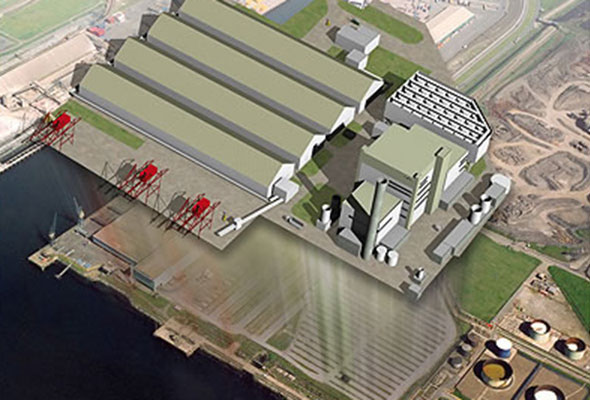
A billion dollar biomass power station that will play a majorpart in shifting UK energy production firmly down the path of ‘renewables’, has been given a helping hand by HBPW’s problem solving engineers.
Tees Renewable Energy Plant (Tees REP) is a 299MW £650m ($1bn) biomass-powered, combined heat and power (CHP) plant being developed by MGT Teesside, a wholly owned subsidiary of MGT Power.

It is located on a 14ha site approximately 5km east of Middlesbrough and 6km west of Redcar, on an industrial zoned land next to Teesport, Teesside. When finished it will help generate part of the UK’s projected 15% renewable energy target.
HBPW’s Paul Withers takes up the story.
“Part of the structure involves the building of a wood pellet receiving pit which, in layman’s terms, is a huge, square hole in the ground measuring 10m in depth, nearly twice the height of an average house!”
However, digging the rather large ‘hole’ was a complex matter. “In order to complete the project successfully we had to design a cofferdam so that we could create a reinforced concrete sub structure and a watertight enclosure that paved the way for us to carry out the necessary excavations below the water table.

“Graeme Construction wanted to slipform the walls of the basement construction and required as few struts as possible so HBPW adopted external reinforced concrete walings to span large distances. By minimising the use of struts we were able to create a clearer working area for the excavating plant machinery.”
Tees REP will diversify the UK’s energy resources and enable it to meet the larger target of generating 15% of all energy consumed from renewable sources by 2020. The project will specifically account for approximately 1% of the larger target.
“It was a complex piece of engineering,” added Paul. “We had to include well points which involved drilling holes into the ground around the external perimeter of the cofferdam so that we could lower the external water table which, in turn, reduced the forces on the sheet pile.”
When finished Tees REP will generate approximately 2.4TWh of electricity a year, enough to power 600,000 homes, which is equivalent to annually displacing 1.2Mt of CO2 emissions.

It is expected to use more than 2.4Mt of wood pellets and wood chips a year with the feedstock sourced from certified sustainable forestry projects developed by the MGT team and partners in North and South America, as well as the Baltic States, and supplied to the project site by ship.
It is scheduled to come online in 2020. ffffffff
